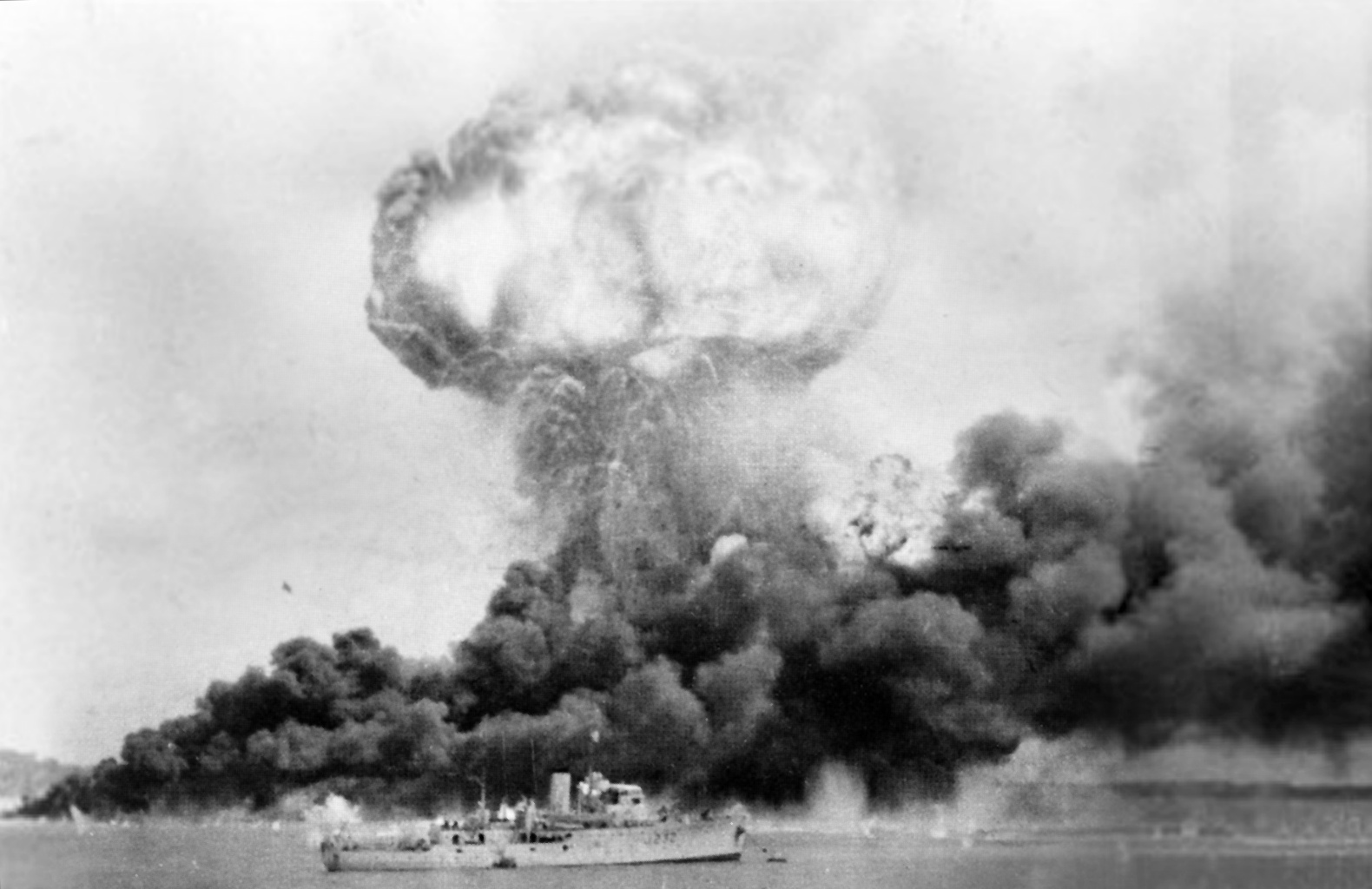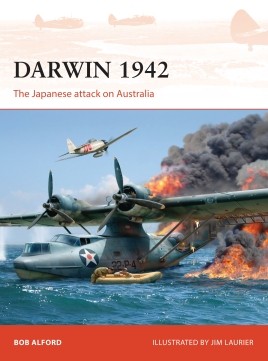Ahead of the publication of Darwin 1942 on Thursday, author Bob Alford discusses the Imperial Japanese Navy's attack on Darwin, Australia on its 75th anniversary.
On the morning of 19 February 1942, just 74 days following the attacks on Pearl Harbor by Japanese carrier-borne aircraft and the subsequent weeks of rapid victories, the Imperial Japanese Navy launched 188 aircraft from four of those same carriers and carried out a devastating morning attack on the port, township and airfields of Darwin in Australia’s far north. A further attack against the air force station was carried out by 54 land-based bombers in a noon raid.
The loss of Allied aircraft as the result of the raids was disastrous; 27 aircraft were destroyed, nine of these in aerial combat with the deaths of four American pilots, or by bombing and strafing on the RAAF Station at Parap Civil ‘Drome, on the harbour and the Tiwi Islands. Those at the RAAF Station fared worst in its perceived importance as a staging base for aircraft heading for the NEI and the ill-fated ABDACOM campaign on Java.
On the harbor eight ships were sunk, including USS Peary with the loss of 88 crew, and many more vessels were damaged, while 23 waterside workers (‘Wharfies’ in the vernacular) died when a single 800kg bomb severed the main wharf. Darwin town was shattered, with homes, government buildings, the hospital and post office targeted. Ten people died in the post office including the postmaster and his family. In all 236 people died in the raids that day.
For the Japanese the losses were ridiculously small. Two aircraft, a Mitsubishi A6M2 ‘Zero’ and an Aichi D3A1 Val dive bomber were lost as a result of ground fire over Darwin while a further two, and possibly a third, were damaged to the extent they were lost on return to the carrier force.
In the words of the attack leader, Commander Mitsuo Fuchida, the attack of 19 February 1942, “…was hardly worthy of the Nagumo Force. The harbor, it is true, was crowded with all kinds of ships, but a single pier and a few waterfront buildings appeared to be the only port installations. The airfield on the outskirts of the town, though fairly large, had no more than 2 or 3 small hangars, and in all there were only twenty-odd planes of various types scattered about the field. No planes were in the air. A few attempted to take off as we came over but were quickly shot down, and the rest were destroyed where they stood. Anti-aircraft fire was intense but largely ineffectual, and we quickly accomplished our objectives.”
 The explosion ofthe MV Neptuna hit during the first air raid on Darwin
The explosion ofthe MV Neptuna hit during the first air raid on Darwin
Source: RAN Historical Collection
In documenting these raids, Osprey’s Darwin 1942 was a long time in the making. I originally commenced writing of the Darwin raids in 1983 when I was serving with the RAAF there, though research began some years before during a squadron deployment in November 1974.
At that time the many sites associated with the raids remained, as did the memories of those who had been in Darwin at the time, both civilian and military. The physical evidence was largely untouched even in the aftermath of Cyclone Tracy and the frenetic rebuilding program that followed the devastation of Christmas 1974.
Many of those veterans and civilians who had experienced the initial raids of 19 February 1942 were still with us and were keen to relate their experiences of that day. Memories were still fresh and I was able to speak with former members of the US Navy including three who had been aboard USS Peary in Dallas Widick, Mel Duke and John Patterson along with three of the surviving 33rd Pursuit Squadron USAAF members, Bob McMahon, John Glover and Robert Oestreicher. Australians of all three services were forthcoming with their recollections and provided valuable information on the attacks from their own perspectives: Ken Tinkler and Murry Lawson of the RAAF; Peter Roberts and Jack Mulholland of the army and Gordon McAndrew of the navy among many others.
 Others wrote books on the events of the day. One, Australia’s Pearl Harbour [sic] was written by a newspaper journalist who was in Darwin during the raids, Douglas Lockwood. Alan Powell’s encyclopaedic work, The Shadow’s Edge followed in 1988 while James Rorrison’s Nor the Years Contemn was published in 1992. These provided a comprehensive overview of the raids with Lockwood setting a benchmark in being able to document the raids through the eyes of one who was there and who was able to interview participants while the memories were fresh in their minds. A number of authors wrote in purely sensationalist terms seemingly with an agenda to highlight any negative aspects of the reaction to the raids; one got the date wrong and another flew the wrong route through Australia and bemoaned the fact that there were no aircraft wrecks along the way.
Others wrote books on the events of the day. One, Australia’s Pearl Harbour [sic] was written by a newspaper journalist who was in Darwin during the raids, Douglas Lockwood. Alan Powell’s encyclopaedic work, The Shadow’s Edge followed in 1988 while James Rorrison’s Nor the Years Contemn was published in 1992. These provided a comprehensive overview of the raids with Lockwood setting a benchmark in being able to document the raids through the eyes of one who was there and who was able to interview participants while the memories were fresh in their minds. A number of authors wrote in purely sensationalist terms seemingly with an agenda to highlight any negative aspects of the reaction to the raids; one got the date wrong and another flew the wrong route through Australia and bemoaned the fact that there were no aircraft wrecks along the way.
Despite these works, none dealt in any great detail with the aerial side of the raids nor of the Japanese in particular, and nor should they have in their addressing the raids in a way that gave an overall picture of Darwin under attack – and in essence, Australia.
With a long association with aviation history and research, and in particular that relating to the Darwin raids, writing of the aerial side of 19 February 1942 was probably more a natural progression for me following the success of two previous books, Darwin’s Air War and Japanese Air Forces Over the NWA 1942–1945.
Fortunately Osprey provided the opportunity to document the raids based upon a plethora of material gathered over the years relating not only to the aerial activities of the day, but both sides of the conflict over Darwin. It is hoped that Darwin 1942: The Japanese Attack on Australia will contribute to the historical record of those events 75 years ago.
Bob Alford
January 2017
Bob's newest novel is Campaign 304: Darwin 1942, which looks further into the attack on the Australian port of Darwin. To order ahead of its release on Thursday 23rd Februrary, click the title.


Comments
You must be logged in to comment on this post. Click here to log in.
Submit your comment